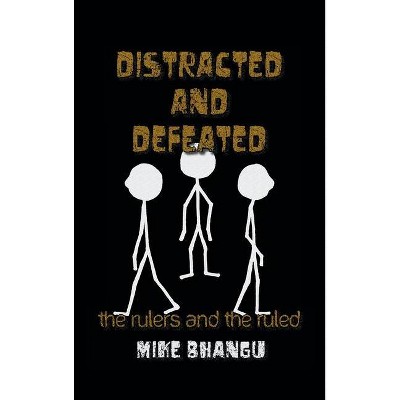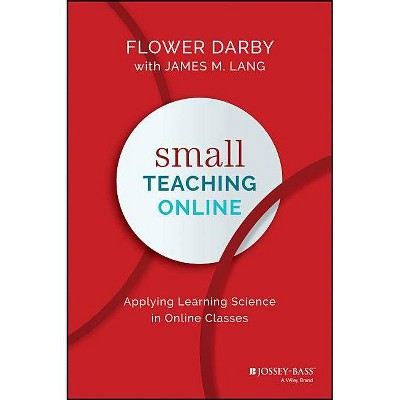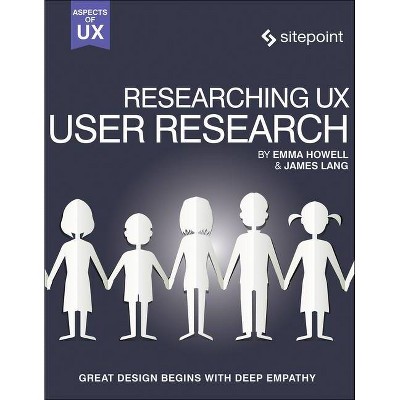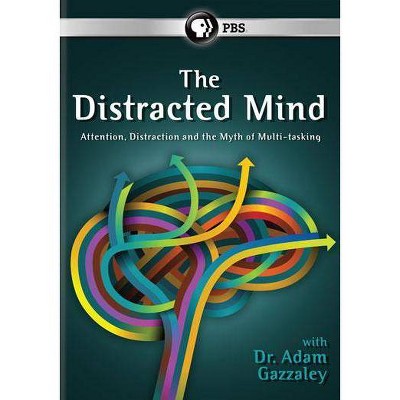Distracted - by James M Lang (Hardcover)
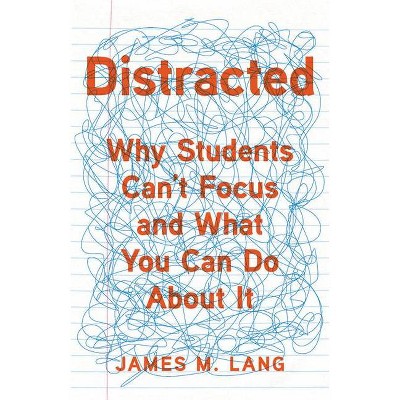
Similar Products
Products of same category from the store
AllProduct info
<p/><br></br><p><b> About the Book </b></p></br></br>"A decade ago, James Lang banned cell phones in his classroom. Frustrated by how easily they could sidetrack his students, Lang sought out a distraction-free environment, hoping it would help his students pay attention to his lessons. But after just a few years, Lang gave in. Not only was his no-cellphones policy ineffective (even his best students ignored it), he realized that he, like many of his fellow teachers, was missing an important point. The problem isn't phones. It's our antiquated notions of the brain. In Distracted, Lang makes the case for a new way of thinking about how to teach young minds based on the emerging neuroscience of attention. Although we have long prized the ability to focus, the most natural way of thinking is distraction. Our brains are designed to continually scan our environment, looking for new information, occasionally wandering off in different directions in search of new insights. This is not to say that iPhones are not good at distracting us, but that what they represent is in principle nothing new, because sustained periods of intense focus are not what humans are good at. Of course, we still do need to pay attention to learn. The problem is that we think of learning as a matter of managing distraction, when we should instead think of it as actively cultivating attention. This starts with letting go of technology bans, which are little more than a fig leaf applied to the objective difficulty of paying attention. But it involves more active ways of rethinking classroom conventions too. For example, rather than structuring lessons as 45 or 60-minute blocks of lecturing, teachers could segment their classes into a series of smaller lessons, with regular shifts in focus, appealing to the brain's interest in novelty. Simple changes can drastically improve students' performance, and in Distracted, Lang takes readers on a sprawling tour of how some of America's best teachers are improving student performance using concepts such as modular classrooms, flow states, and student-directed learning. Together, these insights offer a new way of thinking about how to not only more effectively teach a lesson plan, but to teach students the most important lesson of all: how to learn"--<p/><br></br><p><b> Book Synopsis </b></p></br></br><b>Keeping students focused can be difficult in a world filled with distractions -- which is why a renowned educator created a scientific solution to one of every teacher's biggest problems.</b><b><br></b>Why is it so hard to get students to pay attention? Conventional wisdom blames iPhones, insisting that access to technology has ruined students' ability to focus. The logical response is to ban electronics in class. <br>But acclaimed educator James M. Lang argues that this solution obscures a deeper problem: how we teach is often at odds with how students learn. Classrooms are designed to force students into long periods of intense focus, but emerging science reveals that the brain is wired for distraction. We learn best when able to actively seek and synthesize new information.<br>In <i>Distracted</i>, Lang rethinks the practice of teaching, revealing how educators can structure their classrooms less as distraction-free zones and more as environments where they can actively cultivate their students' attention.<br>Brimming with ideas and grounded in new research, <i>Distracted</i> offers an innovative plan for the most important lesson of all: how to learn.<p/><br></br><p><b> Review Quotes </b></p></br></br><br><i>Distracted</i> is a must-read for every classroom teacher. Lang makes a compelling argument that 'attention is an achievement' and that we should be cultivating 'attention renewal' rather than preventing distractions. He presents practical classroom activities for fostering curiosity and community -- with the research to back them up. Candid insights on effective laptop policies, inviting students into the conversation, and the role of assessments make <i>Distracted</i> an invaluable resource that will change how you -- and your students -- think about learning.--<i><b>Pooja K. Agarwal, Ph.D., cognitive scientist and author of Powerful Teaching</b></i><br><br><i>Distracted</i> proves once and for all that the question we face today is not 'How do we make students stop looking at their phones during class?' but rather 'How can we help students find meaning during class?' Packed with specific, easy-to-implement pedagogical strategies for seizing and maintaining students' academic attention, <i>Distracted</i> is an eminently practical guide for increasing authentic student learning in any subject. It will transform the way we think about teaching and learning in higher education.--<i><b>Jessamyn Neuhaus, SUNY Plattsburgh</b></i><br><br>An optimistic and useful guide to cultivating student attention.... Lang's lucid prose and dry wit make for a pleasant reading experience, and his evidence is consistently on-point. Teachers and parents teaching at home will find inspiration and insight in this sterling study of 'the crucial connection between attention and learning.'--<i><b>Publishers Weekly</b></i><br><br>Attention is a finite and precious resource we are always in danger of squandering. <i>Distracted</i> will help teachers and students use it to nourish mind and soul.--<i><b>Ian Leslie, author of Curious</b></i><br><br>Attention is an essential part of the learning process. Yet, to those who teach, attention can feel elusive and fleeting. In <i>Distracted</i>, James Lang helps us navigate the challenges presented by technologies that bring both a world of information, and the potential for endless distractions, to students' fingertips. Lang encourages us to rethink our attempts to ban anything that may distract learners, and instead, to focus on practices that gain attention.--<i><b>Bonni Stachowiak, Teaching in Higher Ed</b></i><br><br>In order for learning to happen, we need our students to be fully present in the classroom -- and we need to be fully present for them as well. This book tells us why we must actively cultivate our students' ability to focus, weaving together compelling and unexpected approaches for addressing the age-old problem of distracted students.--<i><b>Michelle D. Miller, Northern Arizona University</b></i><br><br>Lang's books have held a place of honor in my library of parenting and education books, and <i>Distracted</i> will, too. It is a delightful mash-up of the research and history on attention and learning. I adore this book and will be recommending it to parents and teachers.--<i><b>Jessica Lahey, author of The Gift of Failure</b></i><br><br>This book will change how you think about education. <i>Distracted</i> takes us on a phenomenal ride into a much misunderstood aspect of human learning and finally into the refreshing light that science, literature, philosophy, and history bring. Anyone who cares about learning -- their own or anyone else's -- should take this journey.--<i><b>Ken Bain, author of What the Best College Teachers Do</b></i><br><p/><br></br><p><b> About the Author </b></p></br></br><b>James M. Lang</b> is a professor of English and director of the D'Amour Center for Teaching Excellence at Assumption University. He is the author of three previous books on higher education teaching and learning: <i>Small Teaching</i>, <i>Cheating Lessons</i>, and <i>On Course</i>. He is also a longtime monthly columnist for the Chronicle of Higher Education. He lives in Worcester, Massachusetts.
Price History
Price Archive shows prices from various stores, lets you see history and find the cheapest. There is no actual sale on the website. For all support, inquiry and suggestion messages communication@pricearchive.us
